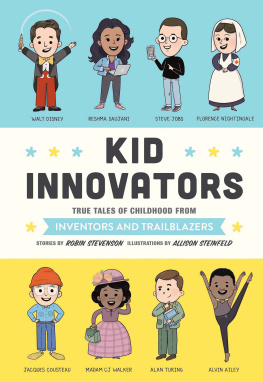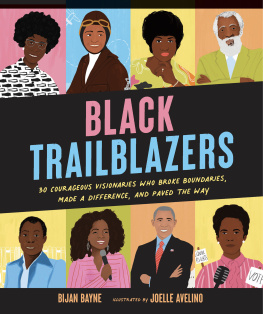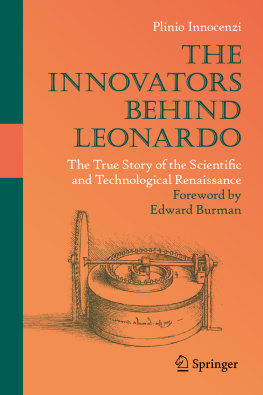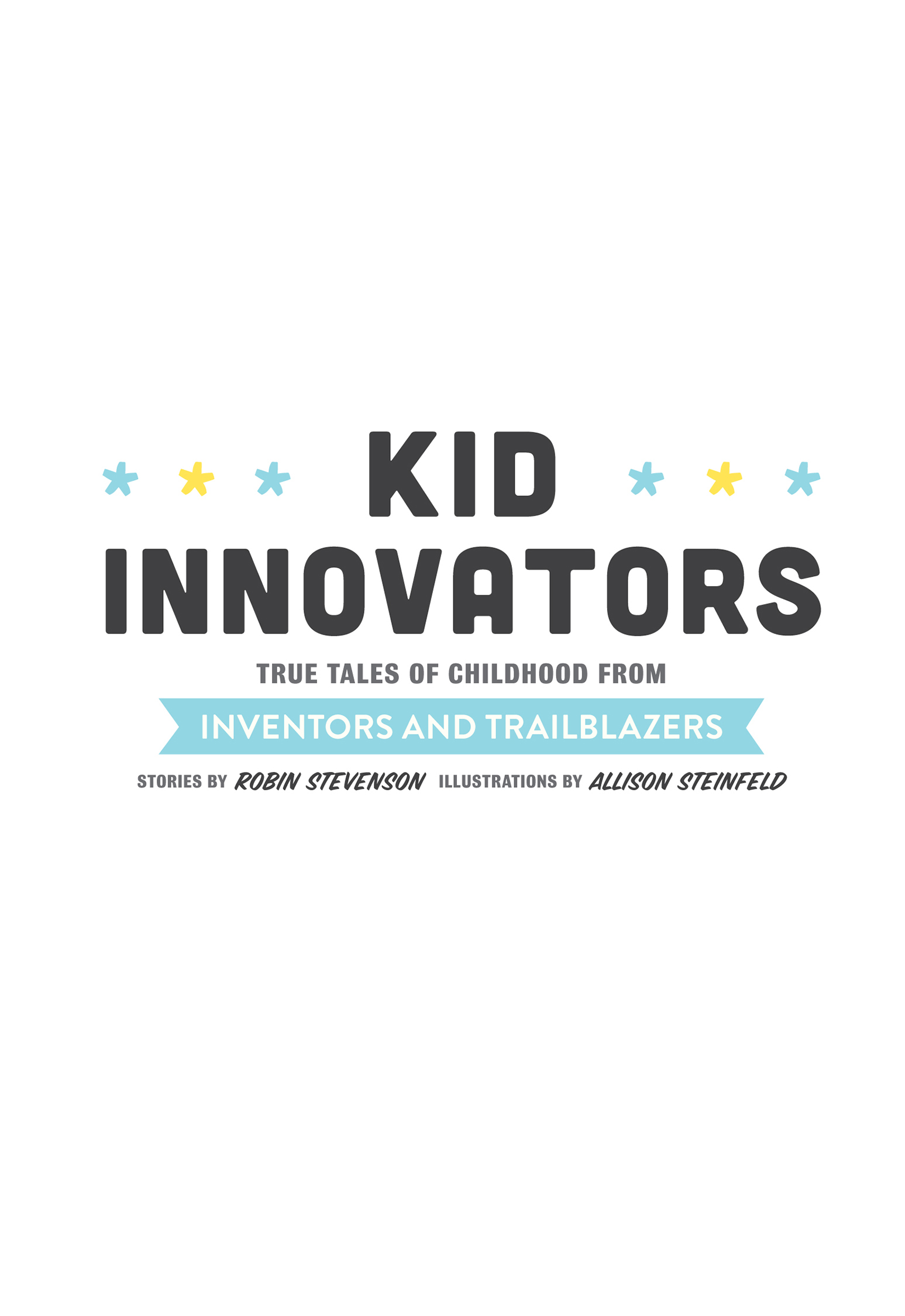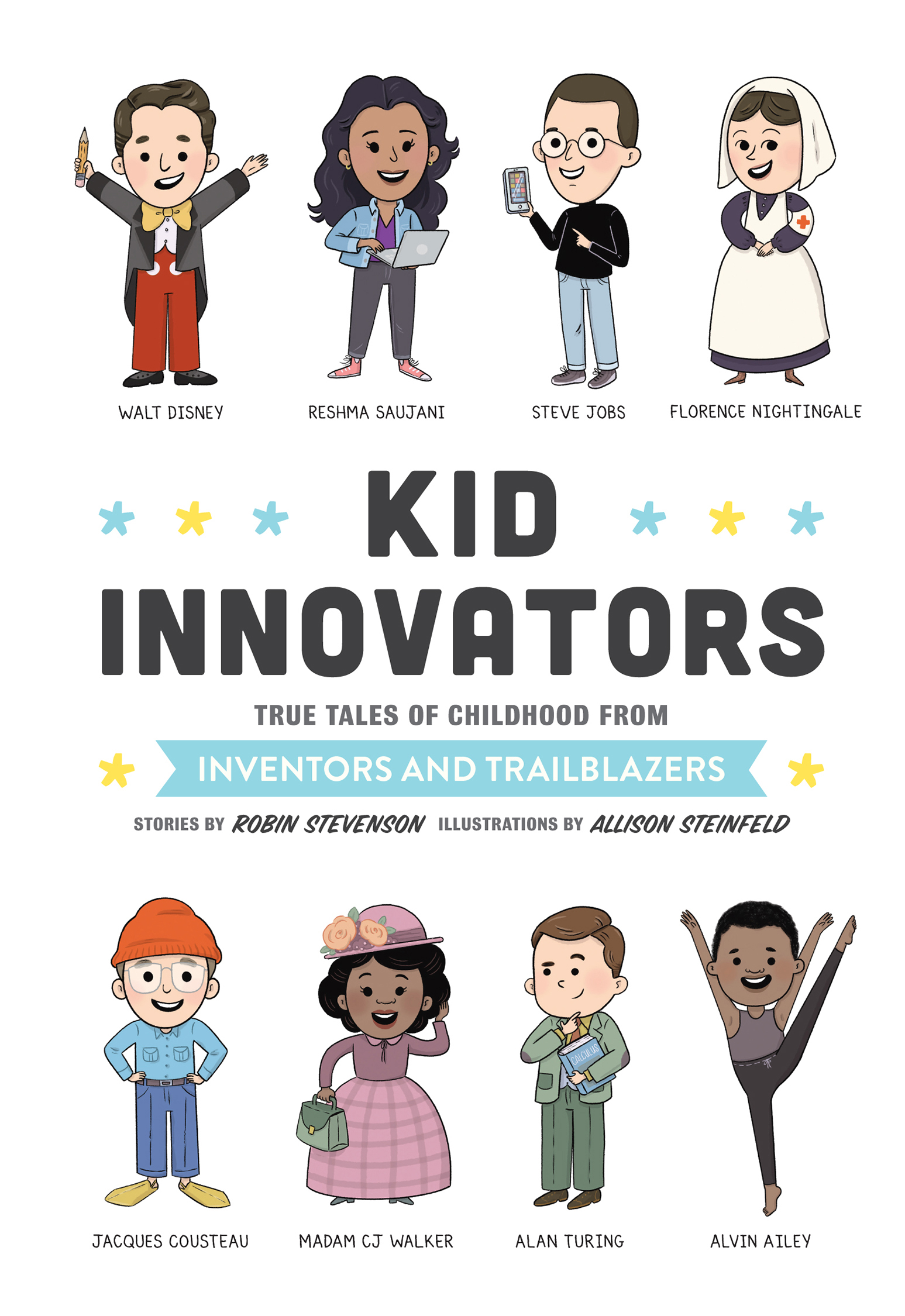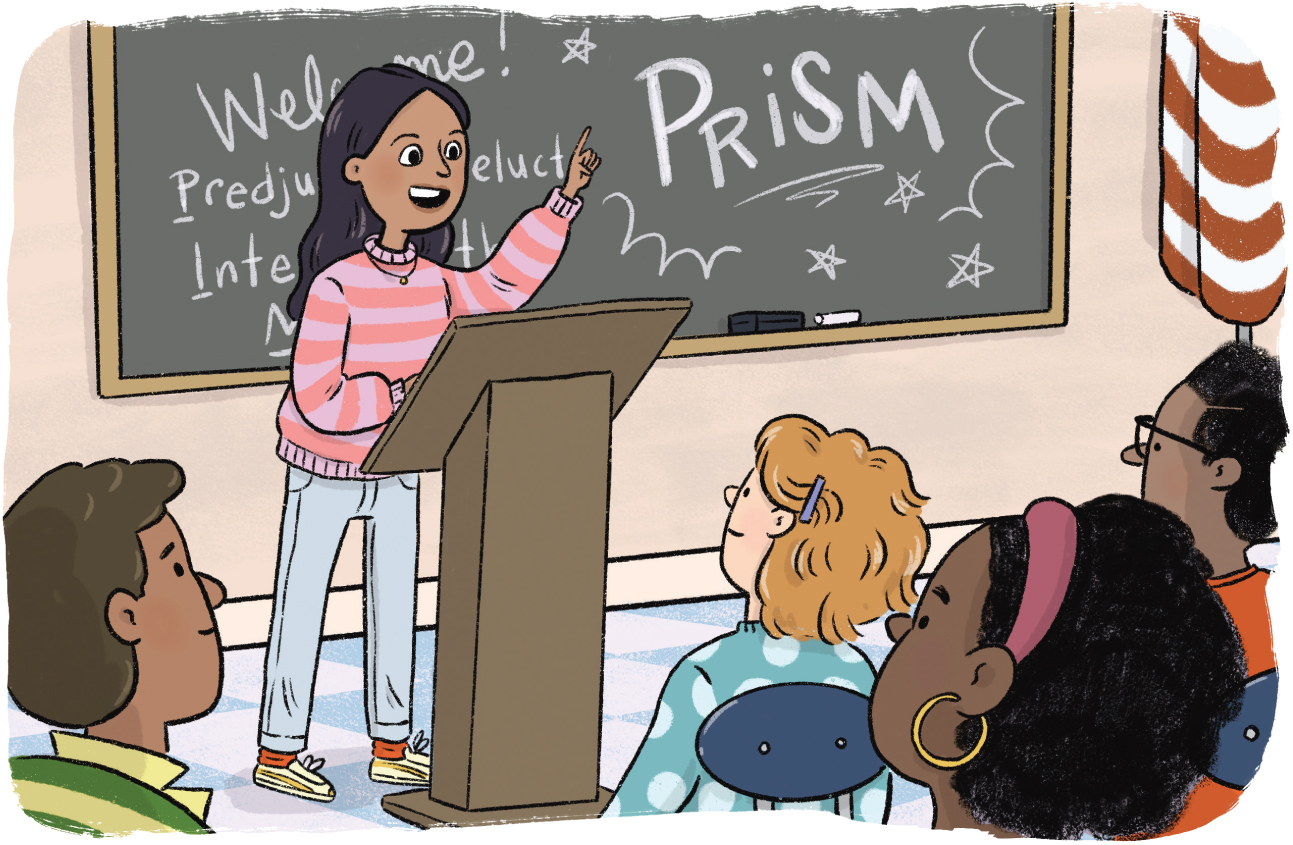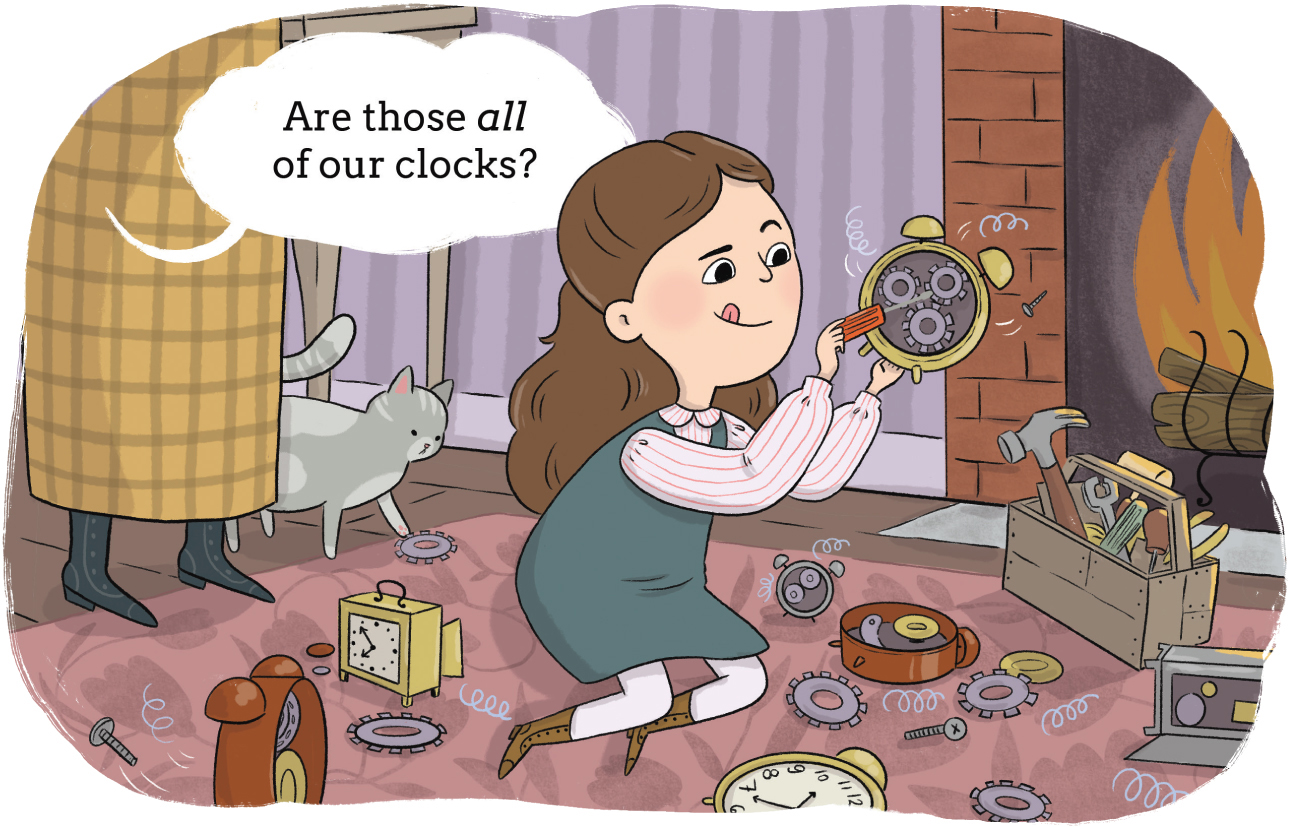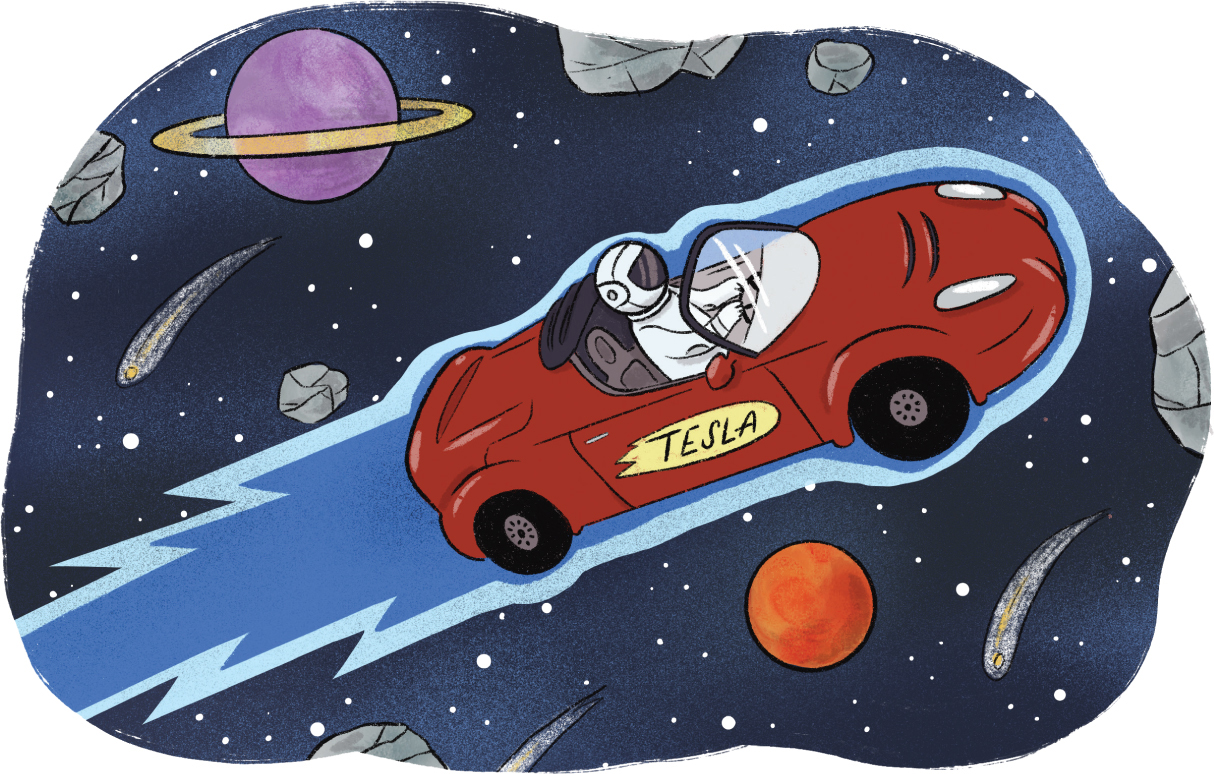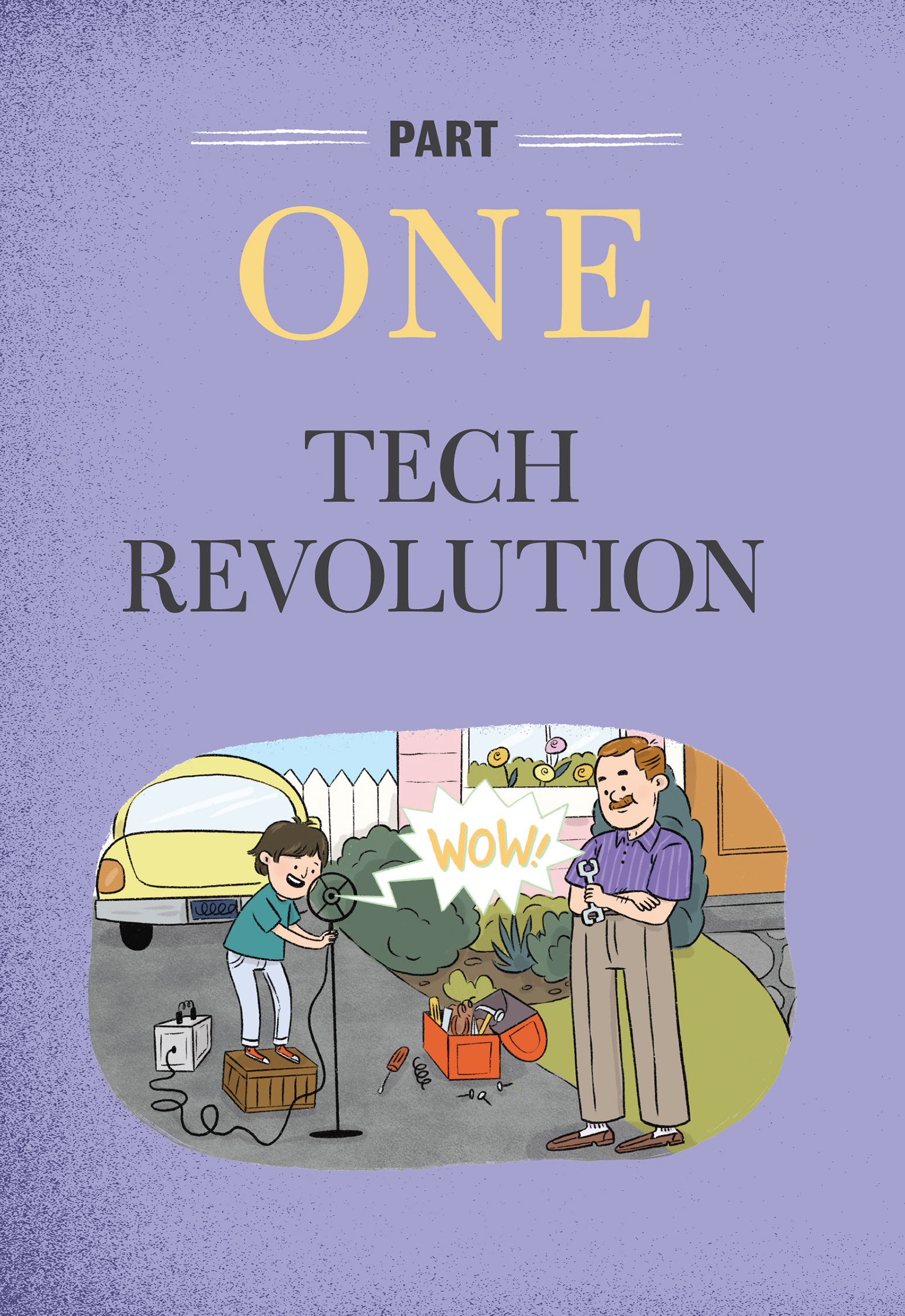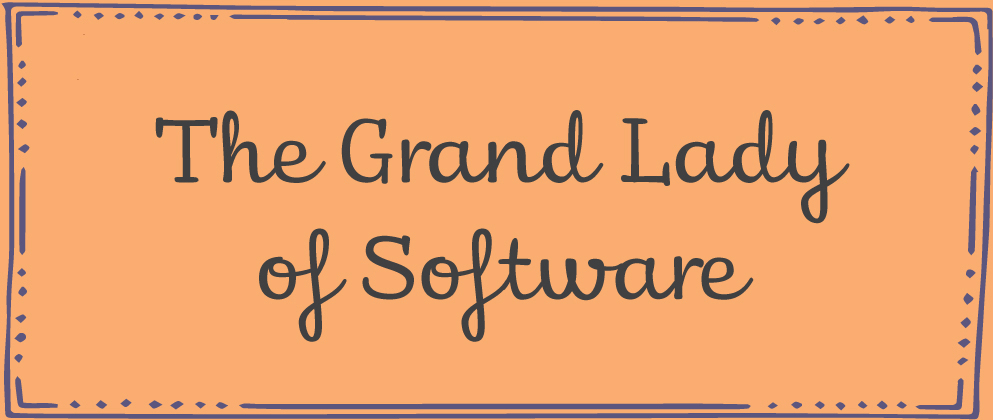Contents
Landmarks
Print Page List
Copyright 2021 by Quirk Productions, Inc.
All rights reserved. Except as authorized under U.S. copyright law, no part of this book may be reproduced in any form without written permission from the publisher.
Library of Congress Cataloging in Publication Data Stevenson, Robin, 1968- author. | Steinfeld, Allison, illustrator. Kid innovators : true tales of childhood from inventors and trailblazers / stories by Robin Stevenson ; illustrations by Allison Steinfeld. Biographies of Grace Hopper, Steve Jobs, Bill Gates, Reshma Saujani and twelve others. LCSH: InventorsBiographyJuvenile literature. | BusinesspeopleBiographyJuvenile literature. LCC T39 .S95 2021 | DDC 309.2/53dc23 2020039476
ISBN:9781683692270
Ebook ISBN9781683692287
Designed by Andie Reid
Illustrations by Allison Steinfeld
Production management by John J. McGurk
Quirk Books
215 Church Street
Philadelphia, PA 19106
quirkbooks.com
a_prh_5.6.0_c0_r0
To my own kid innovator, Kai, for making me see the world differently; and to David, Genevieve and Quentin. So much love to you all.

Introduction
Do you sometimes think differently than the people around you? Do you like to do things your own way? Do you ever dream of inventing something new, or finding a solution for a big problem?
If so, then maybe you will become an innovator! Innovators are trailblazers. They think outside the box, tackle tough challenges, pursue their passions, and chase their dreamsand in the process, they change our world.
Some innovators are inventors: they tinker, experiment, and design new things. Others combine inventions that already exist or use current technology in original ways. Some innovators are entrepreneurs, bringing new products to millions of people around the world. And some transform and revolutionize the fields they work in by challenging old ways of doing things or approaching problems in a different way.
The innovators in this book started out as inquisitive kids. They were full of questions and hungry for knowledge. Grace Hopper was so curious about how alarm clocks worked that she took apart all seven of the ones in her home. Most of these innovators read voraciously as children: Elon Musk and Bill Gates both read encyclopedias from A to Z!
Many of the things we take for granted in our daily lives exist because of innovators. But people dont always welcome change, and innovation is often met with skepticism and even scorn. Experts predicted that cell phones would never replace wired phones. The idea that we might send objects into space was considered to be absurd. And flight was seen as preposterous: Heavier-than-air flying machines are impossible, one famous scientist stated confidentlyonly eight years before the Wright brothers achieved their first flight.
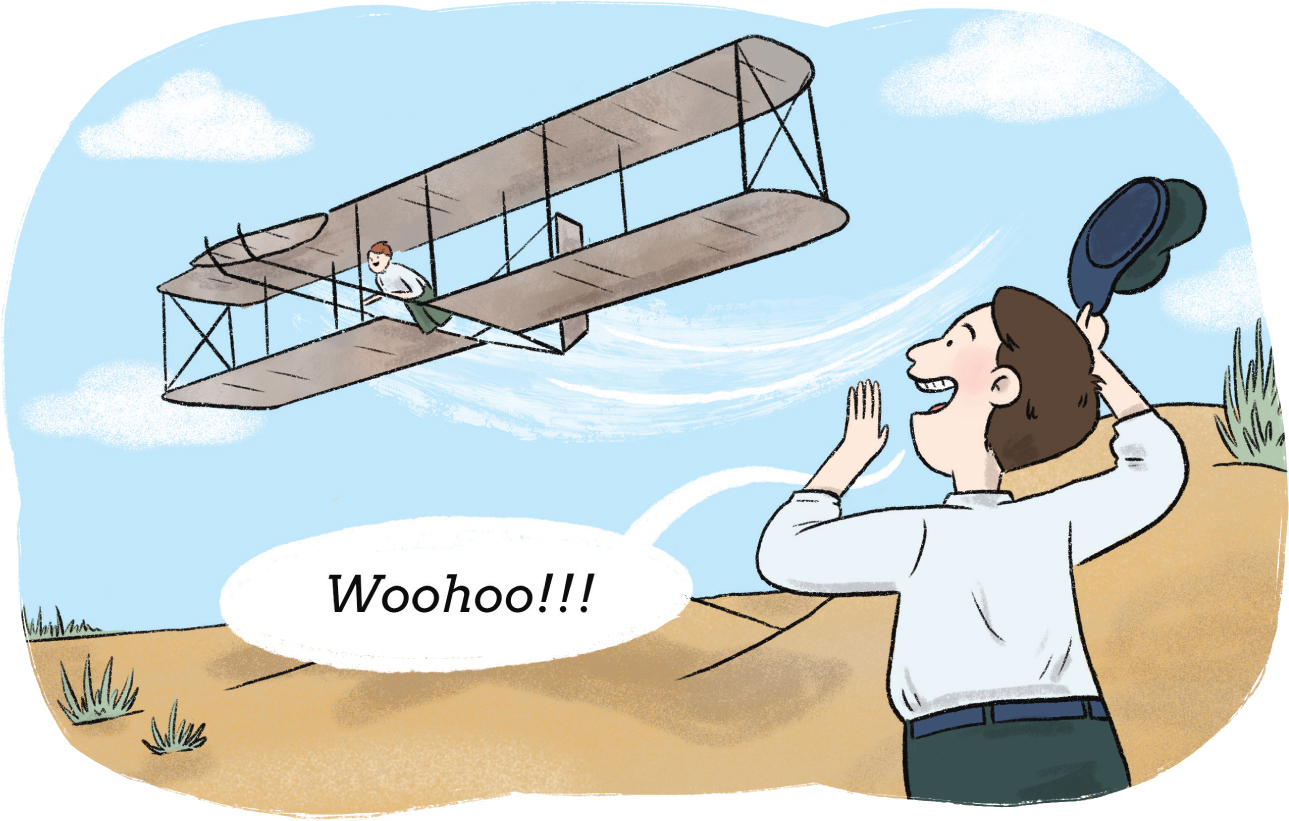
Innovators are people who make the impossible possible. To do that, they need the confidence and strength to go against the crowd. They need to be persistent, and they cant afford to worry too much about what people think. So, it is not surprising that innovators often started out as strong-willed and independent-minded childrenwhich wasnt always easy for their parents and teachers! When Elon Musk was six, his mom said that he was grounded, so he walked the ten miles across town to a birthday party. Steve Jobs was a troublemaker who played tricks on his classmates and was sent home from school repeatedly. And Florence Nightingale liked to question everythingmuch to the despair of her mother, who thought she should be more obedient.

Although they were very intelligent, these innovators did not always do well in school. Many were messy, disorganized, or absent-minded; others wanted to work only on the subjects that interested them. Quite a few of them had little in common with other kids their age and cared more about their own ideas than anything else: Jacques Cousteau was a loner, Alan Turing was a daydreamer, and Bill Gates wanted to stay in his room reading all day.
These innovators all started out as little kids with big ideasand although they often faced obstacles and challenges, they grew up to be adults who pursued their interests with great creativity and passion. Without the innovators in this book, our world would be a very different place. May their stories inspire you to follow your own dreams and blaze your own trail!
GRACE
HOPPER
Grace Hopper is famous for her work in the development of COBOL, one of the first computer programming languages. In fact, she is sometimes referred to as the grandmother of COBOL or the Grand Lady of Software. But when she was young, she didnt dream of working with computersbecause there were no computers to work with!
Grace was born in 1906, at her grandparents home in New York City. Her parents, Walter Fletcher Murray and Mary Campbell Van Horne, were a wealthy couple, and she was their first child. They named her after Marys best friend. Soon after Grace was born, she and her parents moved into a trendy new apartment building near Manhattans Soldiers and Sailors Monument. Three years later, her sister Mary was born, followed by her brother Roger.
One of Graces earliest memories was of meeting her great-grandfather, a retired navy admiral, when she was only two. She remembered him as a large man with a silver-topped cane and white mutton-chop whiskers. Although he died when Grace was young, this encounter helped spark her own interest in the navy.

